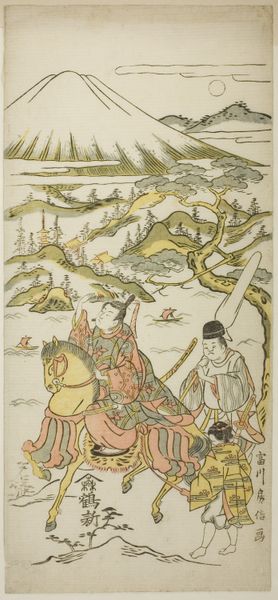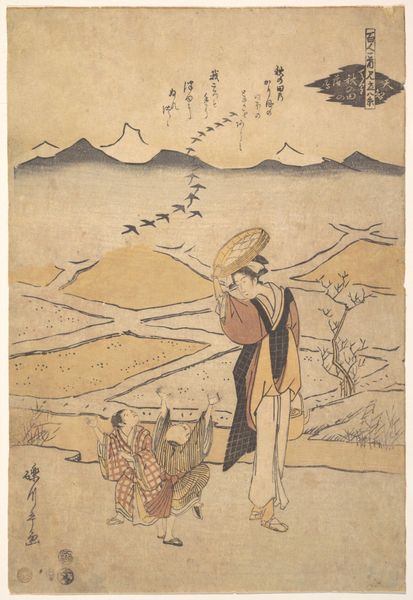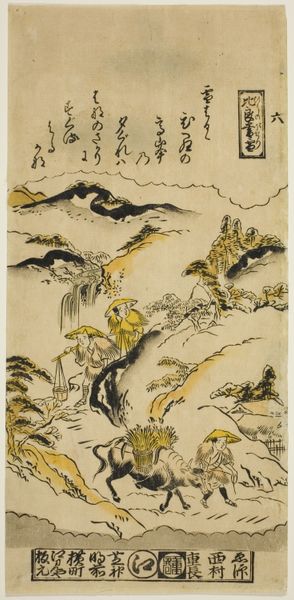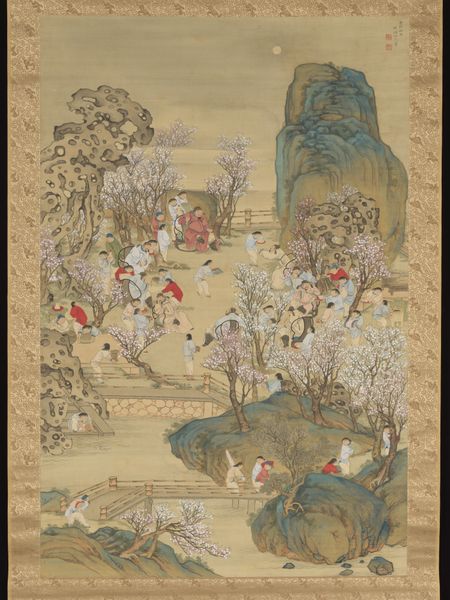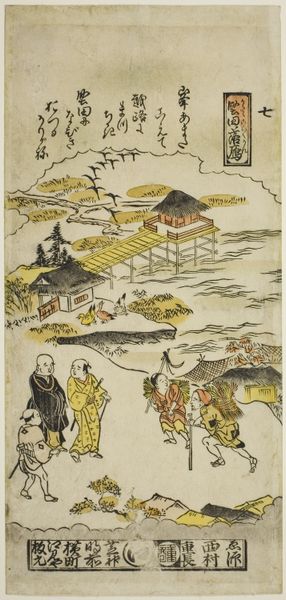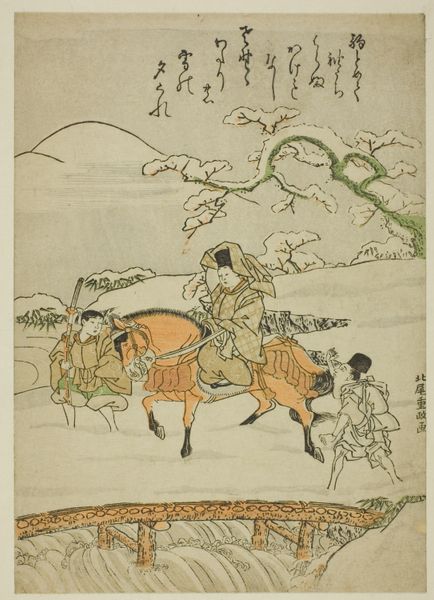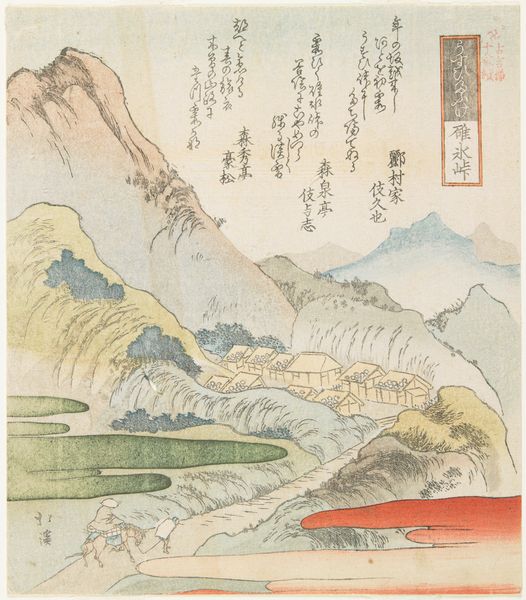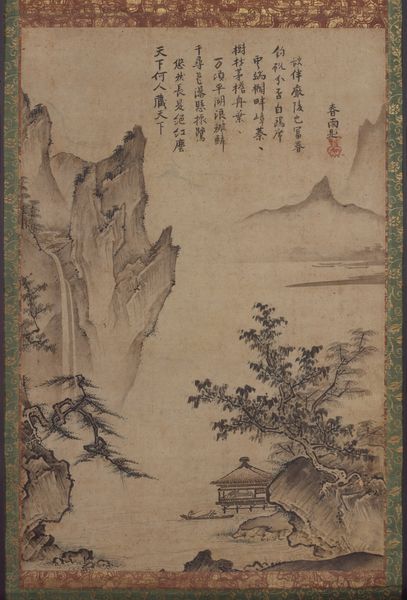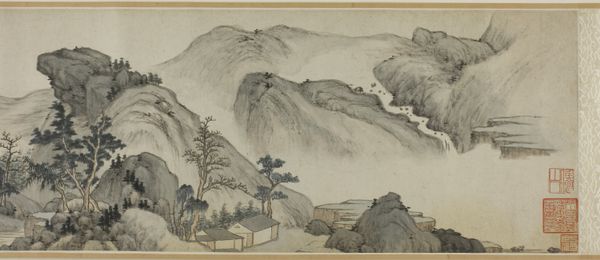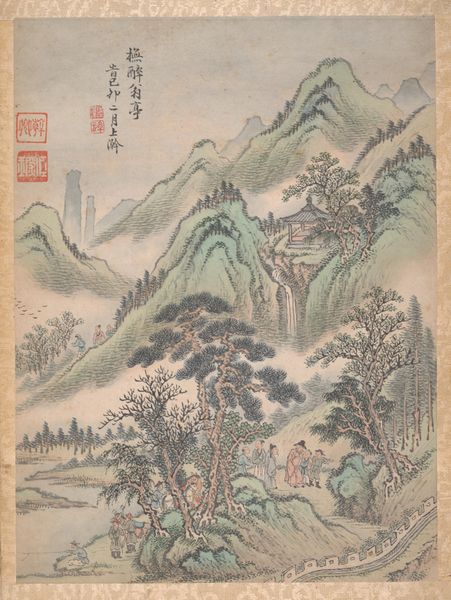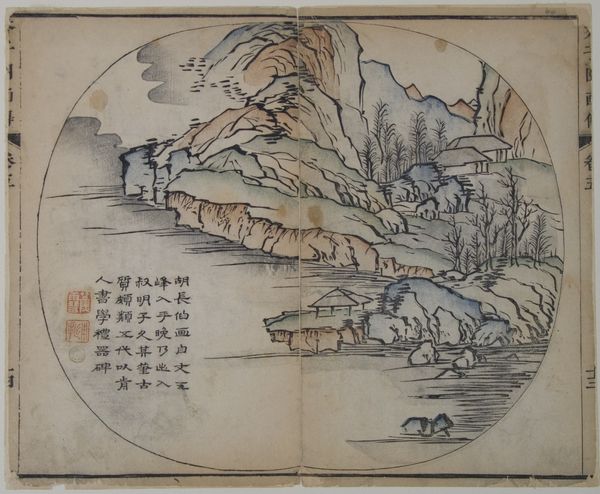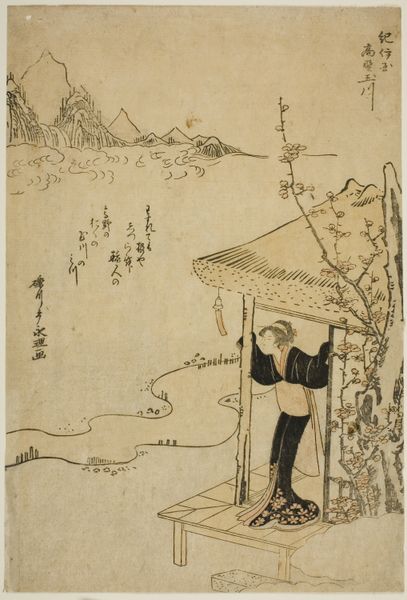
Summer: Planting Rice (Natsu: taue no zu), No. 2 from the series "The Four Seasons of Farmers (Shiki no hyakusho)" c. 1730s
0:00
0:00
print, woodblock-print
# print
#
asian-art
#
ukiyo-e
#
woodblock-print
#
genre-painting
Dimensions: 33.7 × 16.1 cm (13 1/4 × 6 5/16 in.)
Copyright: Public Domain
Curator: This ukiyo-e print, titled "Summer: Planting Rice," part of the "The Four Seasons of Farmers" series, was created by Torii Kiyomasu II around the 1730s. Editor: It has a very rhythmic feel. The diagonal composition creates a dynamic energy. You can almost feel the movement of the figures. Curator: Indeed, the print captures a very specific moment. The figures, likely rice farmers, are depicted mid-task. Notice how the artist uses lines and colors, predominantly yellows and muted blues, to distinguish the laborers amidst their environment. The woodblock print medium allows for these crisp, graphic depictions of the landscape and figures. Editor: I’m struck by the evidence of manual labor involved. From the print itself as a labor of reproductive techniques, to the scene which depicts agricultural laborers; all pointing to the conditions of work at the time. Consider the paper itself—the choices available to the artist, the sourcing, its effect on the colors in each impression of the work. It feels more connected to those activities than purely "artistic" endeavors. Curator: Interesting point! Semiotically speaking, the image presents labor not only as toil but also as a natural element in the four seasons. Consider, too, the placement of text in the upper right—its formal relationship within the scenic composition and its meaning and importance as key to the work itself. The lines, forms, and textures are carefully chosen to evoke both place and process. Editor: Absolutely. By examining the materiality—the physical labor of both agricultural practice and art production—we recognize these representations are inextricably linked to social realities. Acknowledging this grounds it, makes it more… present. Curator: A good perspective. It bridges aesthetics with tangible experience. I see now what you mean by that palpable rhythm. Editor: Precisely, and that's something worth underscoring. The beauty of material engages us even across centuries.
Comments
No comments
Be the first to comment and join the conversation on the ultimate creative platform.
